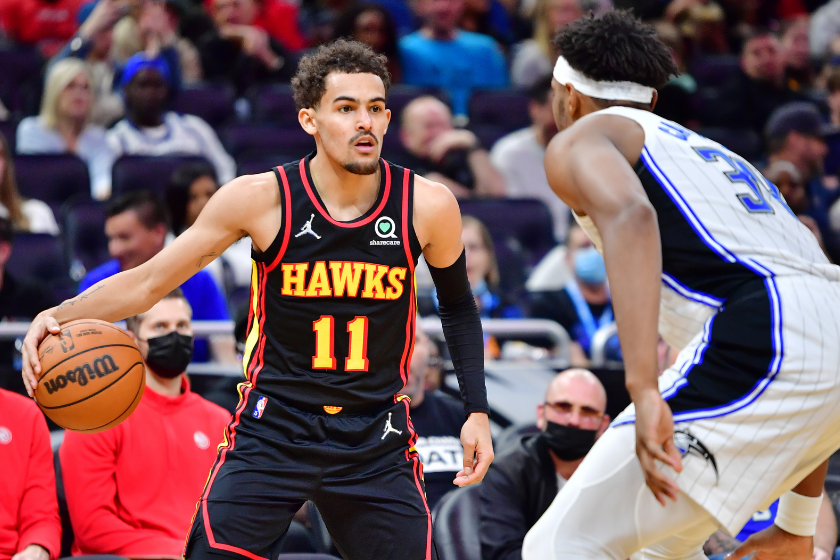Get ready, because it's almost time for the NBA playoffs! But first, the NBA play-in tournament. We saw the play-in format, which garnered mostly negative reviews from players, at the end of the last two seasons. I get it, teams play a long season to make it into the playoff standings, only to possibly get knocked out by a team seeded below them. I'd probably be mad about it, too. It sure makes things a lot more exciting for the fans.
Videos by FanBuzz
Traditionally, the top eight teams in each conference at the end of the regular season earn a playoff spot and are the teams that compete in the playoffs. But how does the play-in tournament work? Well, it's a good time to learn since NBA Commissioner Adam Silver hinted to NBA.com, the tournament won't be going anywhere. Let's dive in.
What is the NBA Play-In Tournament?

Photo by Julio Aguilar/Getty Images
Related: Meet Malika Andrews: ESPN's 26-Year-Old Superstar Reporter
Teams in seeds 1-6 in each conference will automatically play in the playoffs, business as usual. Teams that finish in seeds 7-10 in each conference will participate in the play-in tournament for the last two spots in the playoffs. There will be six total games in the play-in tournament, three in each conference.
The first games will be the 7th-seeded team hosting the 8th-seeded team in each conference, with the higher seed getting the home-court advantage. The winner of this game will move on to take the 7th seed in the playoffs. The loser (saying that always sounds mean) will get another chance, though!
The next games will be the 9th-seeded team hosting the 10th-seeded team in each conference. The winner of this game will go on to play the loser of the first game (either the 7th-ranked or 8th-ranked team). The loser is out of the playoffs. These games will be broadcast on TNT and ESPN.
The last games of the play-in tournament will determine the 8th and final spot in the playoffs in each conference. The game will be between the loser of the first game between the 7th- and 8th-seeded teams and the winner of the game between the 9th- and 10th-seeded teams. The winner will take the final spot in the playoffs! After the play-in tournament, the 16 teams will compete in the playoffs, resuming the usual format.
Why Did the NBA Add the Play-In Tournament?
One of the main reasons the NBA decided to introduce the play-in tournament is to discourage teams from tanking at the end of the regular season in order to get lottery picks.
The end of the regular season can be painful for fans — watching star players sit on the bench, seeing teams lose games on purpose — competition and energy seems to go out the window right before what is the most exciting part of the season. Even the 10th seed has an opportunity to play in the postseason with the play-in tournament, meaning the only teams likely to tank are those that have absolutely no chance of breaking the 10th spot in their conference. It also encourages teams hanging around the 7th and 8th seeds to push harder to win at the end of the regular season and get out of those play-in spots.
There's also the big excitement factor. People go crazy (or...mad) for March Madness — even those who don't follow college basketball at all throughout the year. I, admittedly, don't follow college basketball and I always tune in during March Madness. Single elimination play-in games raise the stakes to about as high as they can be, so more people get invested in each matchup. Fans of teams sitting in the 9th and 10th places in the NBA standings watch in hopes that their team can grind their way into the postseason.
Are you excited? Because we are.

